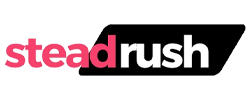From carefree boho vibes to sparkling disco glam, the styles of the ’70s are back—and they’re turning heads. This unforgettable era brought bold outfits and fearless fashion choices that continue to inspire today.
| Disclosure: This post may contain affiliate links and advertisements. We may earn a small commission or advertising fee at no extra cost to you. Learn more in our full disclaimer. |
Fashion in the 1970s reflected a time of change, self-expression, and freedom. Movements like hippie and punk challenged the norm, while disco brought fun and unity to the dance floor. These influences shaped a decade filled with creative and diverse clothing.
Let’s dive into the standout fashion trends of the ’70s that can inspire your next collection or refresh your wardrobe. This guide is packed with popular styles, must-have fabrics, eye-catching accessories, and the designers and icons that made it all happen.
1. Boho Chic

Boho chic, a vibrant and carefree fashion trend that gained popularity in the 1970s, celebrates individuality, creativity, and comfort. Characterized by loose and flowing silhouettes, this style embraces earthy fabrics, playful layers, and unique, often handmade accessories.
At the heart of 70s boho fashion are maxi dresses, wide skirts, and loose pants crafted from lightweight fabrics like cotton and silk, which move freely with the body. Denim was a staple, appearing in everything from jackets and skirts to dresses and flared jeans.
The style favors natural materials such as cotton, linen, and suede, adding to its down-to-earth appeal. Peasant tops, often embroidered and relaxed in fit, brought a globally inspired, artisan touch. Crochet and macrame pieces like sweaters, belts, and ponchos added texture and a handcrafted vibe.
Flared and bell-bottom pants were iconic, often made in bold patterns and diverse fabrics. Layering played a big role in the look—fringe vests, patterned jackets, and oversized scarves contributed to its dynamic, textured aesthetic.
Boho chic also thrived on vibrant prints including tie-dye, florals, and ethnic-inspired patterns. Accessories were essential: wide-brim hats, chunky jewelry, scarves, and flower crowns made each outfit distinct and expressive. Lastly, platform shoes added height and retro charm without sacrificing comfort.
Overall, 70s boho chic remains a beloved style for its relaxed spirit, artistic flair, and timeless celebration of self-expression.
2. Disco
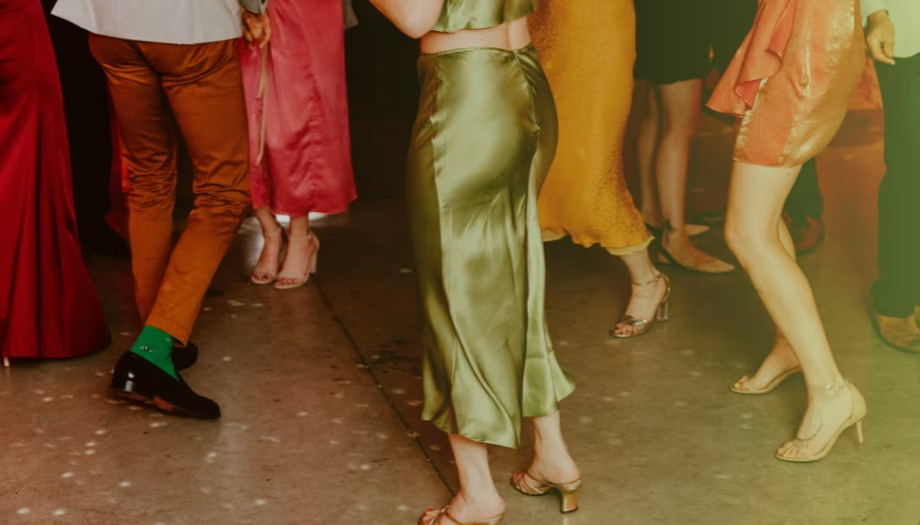
Popular disco outfits featured shiny satin dresses, stretchy spandex leotards and bodysuits, sparkling sequin jumpsuits and dresses, short hot pants, and fluffy fur coats. Diana Ross showed off true 70s disco style with her elegant silk maxi dresses, bold jewelry, and big, dramatic fur coats.
People dressed to impress with outfits that caught the light and drew attention. Bell bottoms, which flared out from the knee, were a favorite among both men and women, often made from denim or shiny fabrics. Platform shoes added height and flair, turning heads with their chunky, standout look. Jumpsuits became a go-to choice thanks to their sleek, all-in-one design and their availability in flashy prints and fabrics.
Sequins were everywhere—especially on dresses and tops—lighting up under the spinning lights of the disco ball. Women often wore hot pants, tiny shorts in shiny or velvety materials that showed off legs and added a daring edge. Some took it even further with space dresses, which had a futuristic, mostly white aesthetic that set them apart from more traditional styles.
Crop tops became increasingly popular, usually paired with flared pants or hot pants, and featured colorful, bold patterns that reflected the fun-loving vibe of the time. Tie-dye designs, with their swirls of color, continued to ride the wave of 1960s influence and remained a popular choice across many garments.
Wide-collar shirts added an extra dash of drama, especially in shimmering fabrics or striking patterns. Men often wore leisure suits, known for their wide lapels and comfortable yet stylish fit, offering a laid-back but polished look. For women, maxi dresses brought elegance with long, flowing silhouettes and vivid prints that moved gracefully on the dance floor. Thigh-high boots finished off many looks, adding a bold and edgy touch to the already daring fashion of the decade.
Overall, 1970s disco fashion was about more than just clothing—it was a vibrant form of self-expression. With its mix of glamour, color, and confidence, it captured the essence of a generation ready to dance, dazzle, and stand out in every possible way.
3. Glam Rock
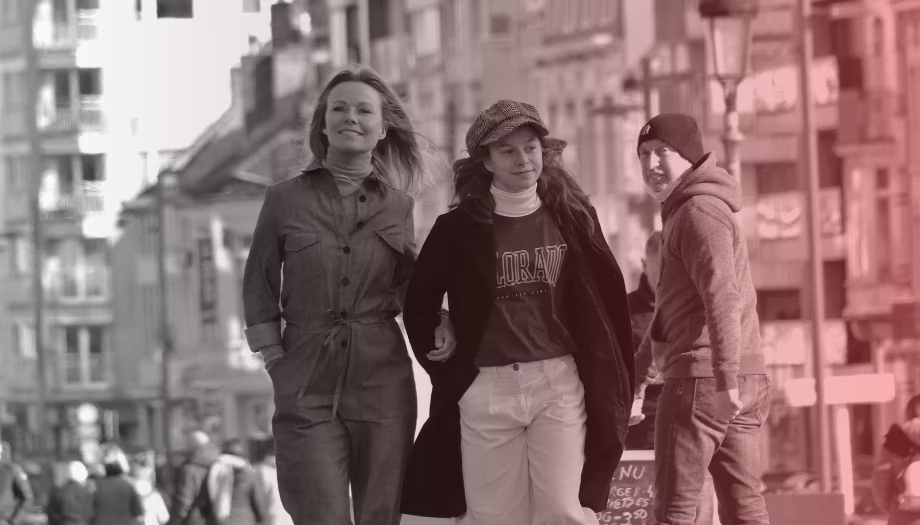
Glam rock burst onto the music scene in the early 1970s, combining loud, dramatic fashion with bold rock music. It was characterized by flashy, colorful outfits designed to grab attention and break away from traditional styles.
Popular styles included mini skirts, bell-bottom pants made famous by hippies, and vintage clothes from the 1950s and earlier.
Glam rock and disco trends brought in platform shoes, shiny satin, glitter, and bold, bright colors with a mix of masculine and feminine looks.
Performers and fans wore shiny jumpsuits, towering platform shoes, and glitter that covered clothes, shoes, and faces, creating a sparkling, stage-ready look.
The style often mixed masculine and feminine elements, encouraging androgyny and self-expression without following gender rules. Leather jackets with studs and flared trousers added an edgy, rock-and-roll vibe, while wild hairstyles and bright makeup completed the eye-catching appearance.
Icons like David Bowie and T. Rex didn’t just perform music—they became fashion trendsetters, pushing boundaries and influencing future styles like punk and new romantic fashion. Glam rock wasn’t just about clothing; it was a cultural movement that reshaped how people thought about fashion and music, leaving a lasting impact that inspired designers and artists for decades to come.
4. Hippie Vibes

When people think about the 1970s, hippie fashion usually pops into their heads right away. This style started to take shape in the late 1960s and reached its height in the early 70s. Clothes like bell-bottom pants, tie-dye shirts, headbands, embroidered folk patterns, and loose scarves became popular and part of everyday fashion.
Hippie fashion is defined by its loose, comfortable fabrics like cotton and linen, designed for ease of movement and breathability. It embraced bright colors and bold patterns such as paisley, psychedelic swirls, and tie-dye, reflecting a vibrant and creative spirit. Bell-bottom jeans, a signature look for both men and women, complemented the style. Hippies drew inspiration from various cultures, wearing ethnic and folk-inspired garments like peasant blouses, embroidered tops, and flowing skirts.
Thrifted and vintage clothing was common, as hippies preferred unique pieces over mass-produced fashion, adding a sense of history and individuality to their outfits. Accessories such as headbands, beads, and sandals enhanced the relaxed, carefree feel of the style.
Typical hippie outfits included combinations like tie-dye shirts or dresses with bell-bottom jeans and sandals, peasant blouses with wide-leg pants and headscarves, or flowing skirts paired with tunics and beaded necklaces. Colorful jumpsuits or overalls also featured in the look.
While hippie fashion is closely linked to the 1970s, it influenced other contemporary styles like disco and glam rock. Disco fashion incorporated bright colors, platform shoes, and jumpsuits, while glam rock favored bold, flashy, and androgynous attire. Hippie style was one key element in the diverse fashion landscape of the era.
Today, hippie fashion continues to inspire modern trends, with tie-dye, wide-leg pants, and bohemian styles making frequent comebacks. Designers often draw on the free-spirited, boho vibe of the hippie era to create fresh, contemporary collections.
5. Punk Style
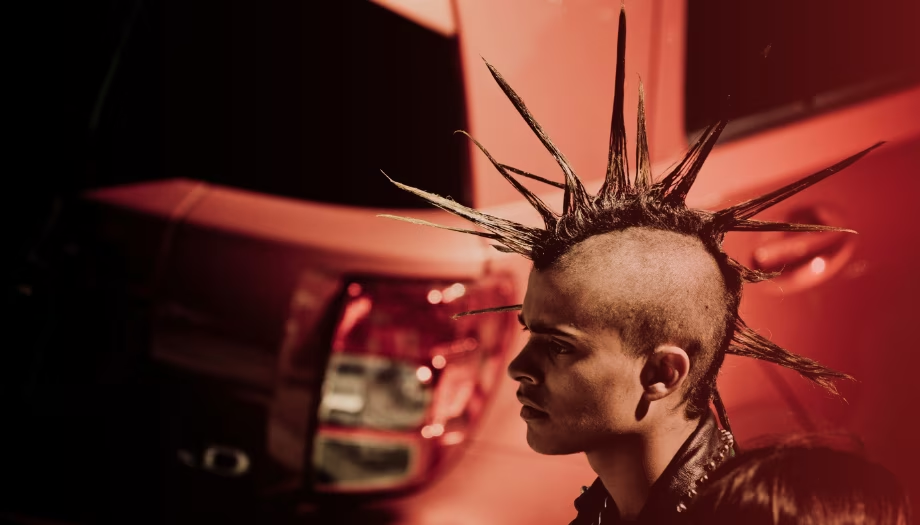
Early punk fashion was all about ripped clothes, safety pins used as cool accessories, band T-shirts, and leather jackets decorated with studs or spikes. People often made their own clothes or changed them to look unique. The hairstyles stood out too—think Mohawks or bright, spiked hair that grabbed attention.
70s punk fashion is defined by a strong DIY spirit, with clothing often customized through rips, patches, safety pins, and other personal touches. Ripped jeans and t-shirts symbolized rebellion and a rejection of mainstream culture. Leather jackets, frequently decorated with studs, spikes, or patches, formed a core part of the look.
Safety pins were more than just practical items—they became bold accessories, sometimes worn as piercings or attached to clothes in unconventional ways. Iconic punk hairstyles included brightly colored, spiked hair and mohawks, while body modifications like piercings and tattoos reflected the movement’s embrace of alternative aesthetics.
Punk fashion blurred gender lines, with men and women adopting similar styles. Thrifted and secondhand clothing emphasized the DIY ethos and anti-consumerist stance. Dark, dramatic makeup contributed to the edgy punk appearance.
Denim, especially ripped jeans and customized jackets, was a staple, often paired with versatile mufti fabrics. Tartan bondage trousers added a rebellious, provocative flair. Band t-shirts featuring logos or slogans were commonly worn and personalized.
Accessories like chains, belts, spikes, and studs were widely used to enhance outfits, and platform shoes added height and boldness. Overall, 70s punk fashion celebrated individuality, rebellion, and creativity through its raw, customized, and edgy style.
6. Athletic/Activewear
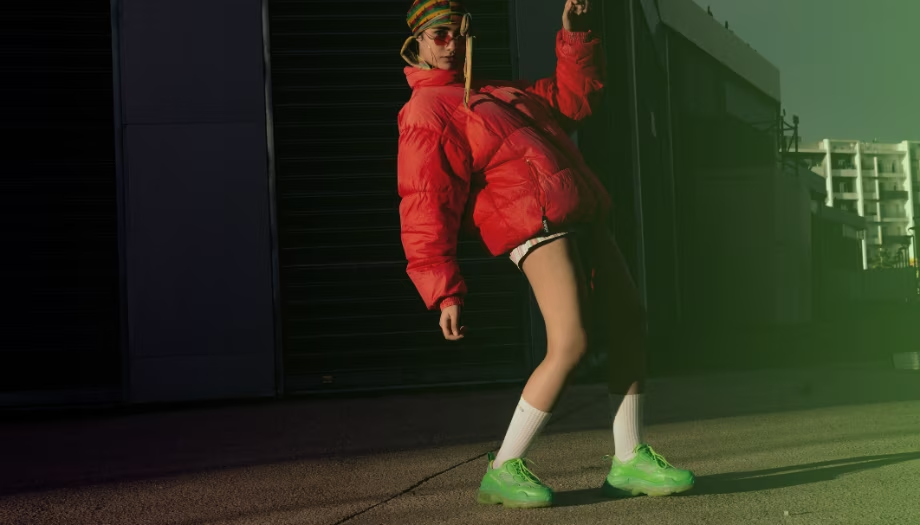
The 1970s marked the beginning of modern athleisure, where athletic clothing became acceptable and fashionable for everyday wear, influenced by the aerobics craze and fitness trends. Though 70s workout gear wasn’t as iconic as later decades’, it laid the groundwork for athleisure’s rise, integrating activewear into mainstream fashion in a fun and experimental way.
In the 1970s, athletic and activewear styles began merging fitness with fashion, introducing sporty trends into everyday clothing. Flared pants, platform shoes, tie-dye patterns, and jumpsuits became popular not just for workouts but as casual wear, blurring the line between gym gear and daily fashion.
Key trends included wide-leg flared pants, especially bell-bottoms, which were common in both fitness and casual contexts. Platform shoes, such as clogs and sandals, combined comfort with style and often complemented activewear. Tie-dye brought bright, bold patterns to both workout clothes and everyday outfits, while jumpsuits transitioned from practical garments to trendy activewear pieces.
Leisure suits, known for their relaxed fit, offered comfort and practicality, though they weren’t strictly workout attire. Crop tops gained popularity among athletes and bodybuilders for showcasing physique, especially in gym settings. Bodysuits and leotards became fashionable in disco and dance scenes, featuring vivid colors and patterns.
Wrap dresses, appreciated for their versatility and flattering fit, were worn both during workouts and casually. Knee-high boots with low block heels added a stylish touch to shorter skirts and activewear ensembles.
Each of these ’70s trends has something special to offer. Whether it’s the earthy ease of boho or the shimmer of disco, these styles can inspire fresh fashion ideas that connect past and present in bold, beautiful ways.
